This post has not been edited by the GamesBeat staff. Opinions by GamesBeat community writers do not necessarily reflect those of the staff.
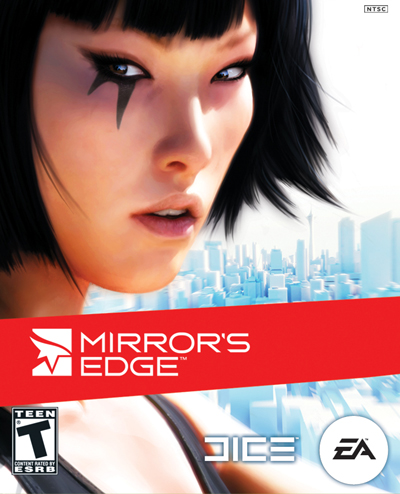 I find myself at a loss for words; I just experienced Mirror’s Edge. This (stunning!) first person adventure from DICE (a subsidiary of EA) is simply too profound to receive a normal introduction. The best place to begin is from the beginning.
I find myself at a loss for words; I just experienced Mirror’s Edge. This (stunning!) first person adventure from DICE (a subsidiary of EA) is simply too profound to receive a normal introduction. The best place to begin is from the beginning.

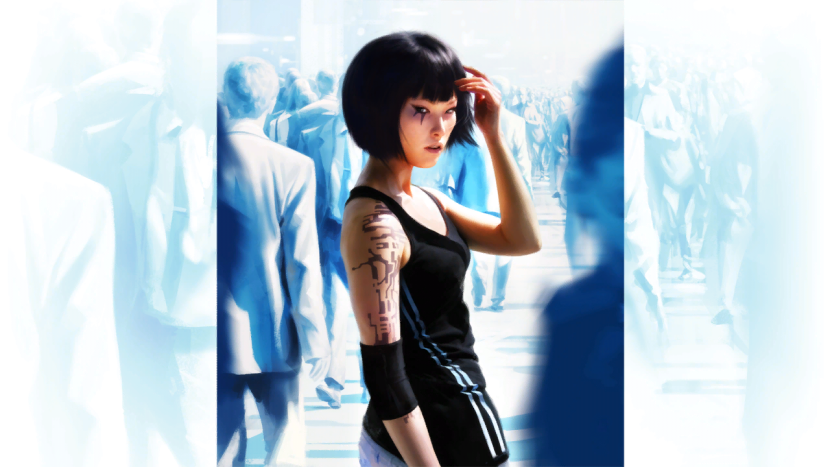
Faith Connors
The name of the main protagonist is Faith Connors. She is, quite simply, a Runner. A messenger of sorts, really, delivering highly sensitive information. You see, the massive, nameless city she inhabits was once an amazing place- “Dirty and dangerous, but alive and wonderful.” In recent years, however, came sweeping changes. The city was sanitized- crime was swept up, problems smothered, and everything seems, on the surface, to be alright. As one may rightly guess, nothing is ever as it appears. Indeed, you’re being watched, and you’d better stay in line! The totalitarian government in charge would not be happy if you somehow you mentioned all the corruption, and should you try to actually change anything… No power in the ‘verse can save you. The media is controlled by the government, so you have no real chance of getting a message out. This is where the Runners come into play. Those who wouldn’t opt for an easy, manipulated life were jailed, run into hiding, or otherwise disgraced. They became the Runners’ clients.

This brings us a bit deeper into the job description. As a Runner, you’ll be expected to do some pretty wild things. Leaping across rooftops, crawling through vents, and watching bullets whiz by with mere millimetres between you and certain death is all part of the fun. You’re a practitioner of the fine art of parkour, traversing your environment with the utmost speed, skill, and style.
Something especially useful is the ability to wallrun, which is literally what it sounds like: running on the walls.
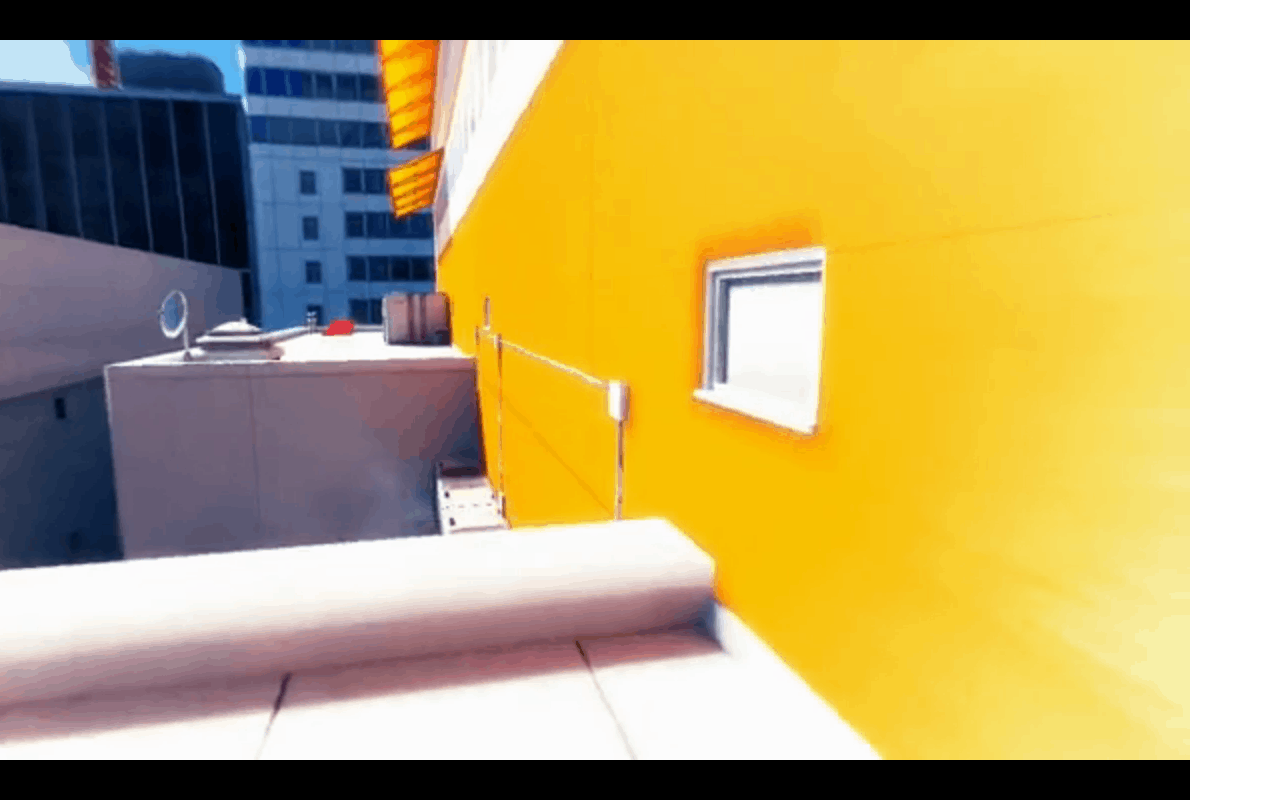
This ability adds a whole new dimension to gameplay. Admittedly, it can be somewhat difficult to employ, and it takes practice to get it figured out. Once you get a handle on it, however, there’s nothing quite as satisfying as running across a wall, grabbing a bar, and swinging onto a nearby ledge, likely into a posse of Blues.
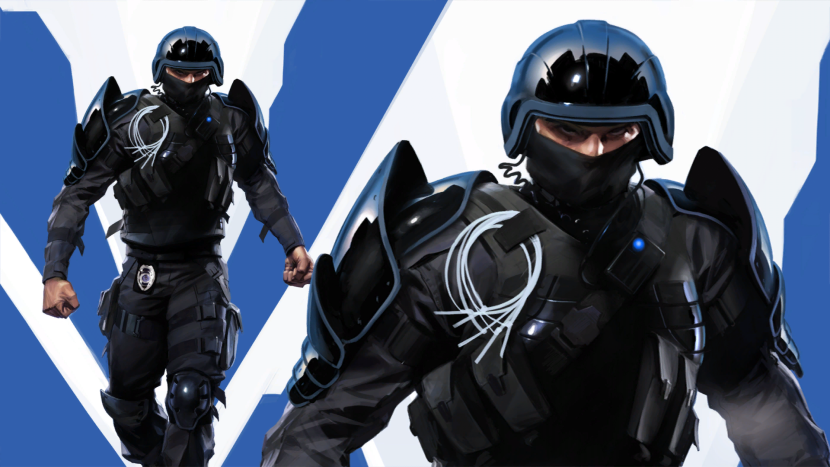
The Blues are the ingame police, primarily comprised of the City Protection Force (CPF) and the privately owned Pirandello Kruger (PK), both of which are organizations rife with corruption and drunk on power. They’ll vary, from minimally armed to equipped in full riot gear, armed with heavy machine guns and strong armor. The latter are (almost) the most difficult to fight, with the exception of one other unit that, for the sake of spoilers, I won’t mention.
This brings us to combat. While it’s certainly possible to go toe-to-toe with the blues, you can only throw a few punches before you’re thrown backwards at the cost of some health. So how do you fight them? You could keep punching and ducking, though that won’t do much good against the more heavily armored riot cops. So how exactly are you supposed to deal with this? Well this is a game about parkour, isn’t it? You can employ various parkour moves in hand to hand combat! For example, you’re running straight towards a Blue who happens to be standing pretty close to a conveniently placed wall. What do you do? You can either charge him Ramboesquely and get shot, or you could take advantage of your environment, running across the wall, leaping off, and delivering a swift, well placed kick in the process, enough to stun him, and giving you enough time to get away. You can also either knock him out entirely, either with more flying kicks, or by disarming him. The latter is somewhat more difficult; it requires excellent timing and good reflexes. You see, if you get close enough to a Blue, he’ll stop shooting and begin to swing his gun towards you. You’ll be mercilessly pistol-whipped, and it knocks off about half of your health.The way to prevent this from happening is either to duck, run back, or grab his gun. The last action is the hardest, as one might guess, but it’s also the fastest way to KO a Blue. You’ll need to wait for the gun to turn red as it’s being swung towards your face, and not a moment too soon. If you’re successful, he’ll wind up flat on his back, unconscious, and you’ll be armed.
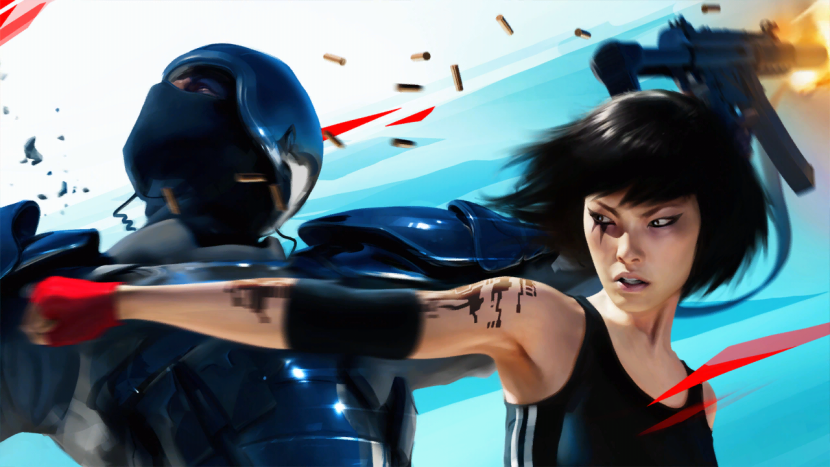
It is quite possible to use the guns ingame, although shooting mechanics aren’t particularly good. This is somewhat ironic coming from the same studio that creates the Battlefield series. Regardless, it’s completely possible to win the game without shooting anybody. I know this because I did it, and boosted my gamerscore by 80 points. I think the ability to play the game with shooting anybody is certainly a step in the right direction; Runners are simply messengers, and they’re delivering information about a corrupt government that’s willing to use any means to quell uprising; shooting somebody in the face just seems counterproductive. Are you really much better than the people you’re shooting? How many of them are just guys following orders, trying to feed their families? Perhaps I’m reading a little too much into this, but whatever the case is, guns slow your progress, encumbering you when you’re either climbing, making you heavier when you leap, etc.

Aesthetically, the game is incredible. The graphics are cel-shaded, giving them a unique, slightly cartoonish look. The cut scenes are a little bit different, styled similarly but in 2D, and they’re absolutely gorgeous. There’s something spectacular about the visuals, namely the way in which you can climb to the top of a structure and get a good view of the gleaming city below, and if you’re brave enough, be sure to look down. There are people on the sidewalk, cars driving by, a little world beneath your feet, simply operating according to plan. Everything also seems very sterile on the surface, and externally, the buildings are flawless. The lobbies you may find yourself in (likely busily dodging bullets), are nice enough to be remade in real life, but inside, it’s a much different story. As if to mirror the condition of the city, when you get deeper into buildings, you’ll find that not everything is quite as clean as it seemed. In sharp contrast to the world running parallel, the insides of buildings are often gritty, forsaken, dangerous places, with cramped spaces, and the occasional traces of the city’s broken past.
The game has no HUD (heads up display), so you have to gauge your own health, and carefully! Things will begin to turn gray, darkening the entire world when you’re hurt, and you’ll see red around your vision. Occasionally when shot, you’ll see a small splash of your own blood before your eyes. There’s a reticule to prevent you from getting sick, but aside from that you’re on your own. The lack of an HUD really adds to the game, giving it a sense of realism, leaving you feeling that you really are a Runner, flying free across the roofs. You’re guided by the color red throughout the game, and you have what’s known as “Runner Vision”. This turns ordinary objects red, highlighting them as things to climb, ride, open, or otherwise operate. Personally, this caused me a minor problem: I got runner vision in real life. I’d see a red object and begin mapping out a route with which to reach it! Occasionally too you’ll find the games logo stamped on various surfaces. This typically indicates that a bag is nearby. The bright yellow bags you’ll occasionally encounter contain information, items from the failed missions of other Runners. While finding them isn’t necessary to the game, it certainly adds a special challenge when you start actively seeking them. Occasionally, they’ll unveil some sort of Easter Egg. One that struck me is picking up a bag and finding a simple drawing, likely by a small child, that depicts people being shot down by the riot police. For some reason, this left an impression on me. It really made the game much more profound, even though it was likely simple to add. It’s small details like these that take Mirror’s Edge from a well made adventure game to an incredibly well made dystopian video game, on par with masterpieces such as Orwell’s Animal Farm or 1984. The games story is extremely engaging. I found myself watching cutscenes multiple times simply because they were so well made, both visually and with regard to the story. Faith’s sister, Kate, has been falsely accused of a heinous crime against a mayoral candidate who, as it seems, was doing too much good. You’d really like to help her, but there are a few obstacles in your way; for starters, you’re a Runner. If you showed up in court, you’d probably be executed on the spot. Another problem is that, like everything, the judicial system is terribly corrupted. The game mostly revolves around your trying to find out who would frame Kate, and why. I’d really hate to give away much about the story seeing as it’s simply so good, so I’ll stop myself. I must, however, say that it’s not only told through the cutscenes, but also through the little things you’ll find in the game. Yet another one of these things lies in what happens shortly after a cataclysmic event at the beginning of the game. For the sake of spoilers, I won’t mention who it happens with, but I can tell you that it’s a hug. And it doesn’t feel forced, or tossed in, it feels like part of the story. And I must say that from that point, the game felt like it just began anew.

Though it isn’t often commented on, the sound design was also top of the line. Many of the sounds ingame serve to guide you. For example, when certain Blues are about to pistol whip you, they’ll grunt around the same time that their weapons turn red. I found myself relying on this from time to time, taking advantage of it. Sometimes, it was simply easier to listen and react. The other noises too, were well put together, and there was quite a bit of variation in them, e.g. you could disarm a guard and hear different exclamations every time. This was quite satisfying. Sometimes, too, you’d hear Merc’s voice in one of your ears. Merc, your boss, is essentially behind the entire Runner operation, organizing missions and keeping a watchful eye on all his Runners. Everybody’s equipped with a small, in-ear radio that allows Merc to contact you with tips, track your location, and keep you alive.
Excellent as well is the music; it serves its purpose quite well without being either unnoticeable or overbearing. The games end theme, Still Alive, is absolutely perfect for the games grand finale, and is heard in snippets throughout the game, sort of building up until the end when it breaks gloriously free. Keep in mind that this is a different song than the one in Portal, though it’s just as wonderful.
Now, it’s time for gripes. Admittedly, I only have a few issues with the game, but these are actual issues. For starters, I’d occasionally be wallrunning when suddenly, I’m stopped short for what seems to be no reason. As it would turn out, I’ve just been stopped by a small protrusion on the wall. You have to start from the last checkpoint. This is a real annoyance, since the game has no rewind function, but it’s a real small annoyance, since the checkpoints are usually conveniently placed. Another problem is a glitch that seems to involve falling; you see, after you fall a certain height, you’re going to die no matter what you do. When this happens, images become choppy looking and you can only hear the buzz of the wind rushing through your ears before that final, painful crunch. The trouble with this glitch is that you’re not going to stop falling. You’ll get stuck on some surface and watch a stationery image moving past you at the speed of sound… And then you have to restart the level from the last checkpoint. The trouble is, starting from the last checkpoint means starting from the last story checkpoint, not the conveniently placed ingame checkpoint. To illustrate, if you’re climbing a tower and fall off, you start around the edge where you fell. If you encounter the glitch, it looks like it’s time to start climbing again. This was a real pain in the rear around the penultimate chapter, but aside from that, the game is mostly glitchless.

This brings us to the controls. I’ve only played the Xbox 360 version, but I must say that the controls are quite different from most FPS titles. While you’re still using the twin sticks to look around, most other movements, such as wallrunning, jumping, kicking, etc., are controlled with the shoulder buttons, thus making it somewhat difficult if you’re not used to using them. Once you do get a handle on the controls, however, the game becomes much easier. It’s worth playing the tutorial level a few times to get a grip on controlling the game properly.
Another awesome feature I failed to mention earlier is the ability to slow time; this ability is recharged by running, and it makes it much easier to perform disarms, and is also pretty handy when you’re watching a hail of bullets fly right past you and you’re wondering how to get past a certain area. It gives you just enough time to think about what to do next.
Final Verdict
Overall, this is a game worth buying. It’s a unique experience, and I really hope it receives a (good!) sequel. The story is top of the line, it’s graphically masterful, gameplay is very good (not to mention beefed up thanks to the addition of time trials), and there’s little reason not to play. So give it a shot, I doubt you’ll be disappointed. If you’re looking for something unique, underrated and overlooked, you have a taste for dystopia, or you just want a game to burn time with until something else shows up, try Mirror’s Edge. I doubt you’ll regret it.
(Review Score)
Purchase it. Now.
(5)/(5)
More:
Official website: http://www.ea.com/mirrors-edge
Forums: http://on-mirrors-edge.com/forums/index.php
Screenshot source: http://on-mirrors-edge.com/forums/viewtopic.php?id=4775
Official Mirror’s Edge Trailer: http://www.youtube.com/watch?v=2N1TJP1cxmo
Source: http://www.d-gu.com/mirrors-edge-review-at-digitalgu/
